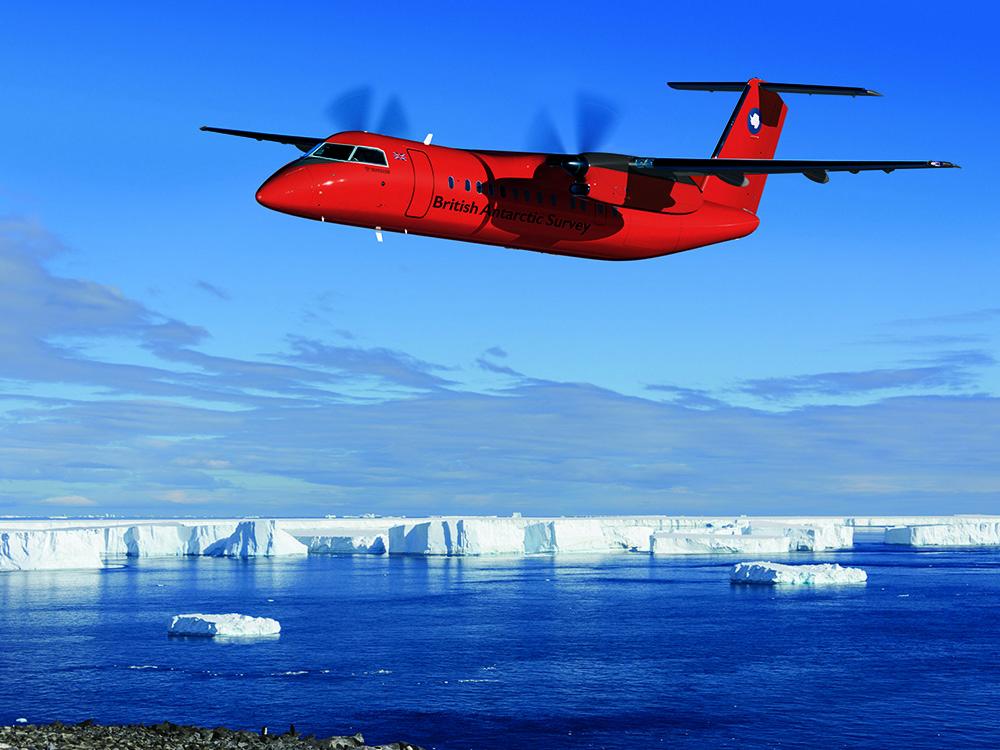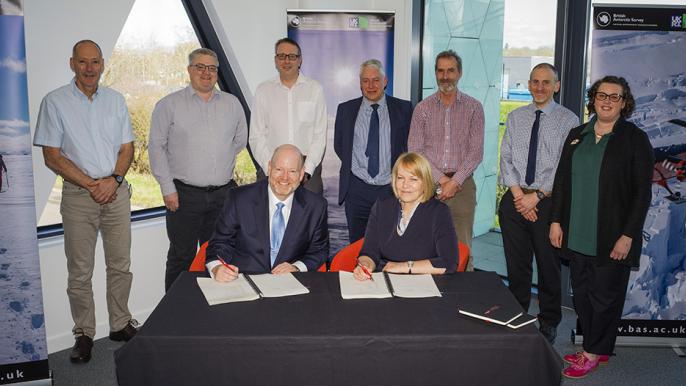
The British Antarctic Survey (BAS) is getting a newly modified aircraft to help it transport staff and cargo to its Antarctic logistics center at Rothera Research Station.
Canadian aftermarket specialist Field Aerospace has been awarded a contract by United Kingdom Research and Innovation to supply and modify a De Havilland Canada Dash 8, which will transport BAS support teams and cargo between Rothera Research Station and Punta Arenas, Chile.
The aircraft will replace the Dash 7 BAS has been using since 1994, which was also modified by Field Aerospace. BAS says the Dash 7 has become increasingly more challenging and expensive to maintain, and pilots and engineers qualified for the model are becoming scarcer, so it plans to retire the aircraft in March 2025.

De Havilland Aircraft of Canada and Collins Aerospace have been chosen as major sub-contractors on the Dash 8 project. The OEM will deliver the base aircraft and provide training and support while Collins will provide a kit and supplemental type certificate to install a large cargo bay door.
In addition to the freighter conversion cargo bay door, Field Aerospace will be performing an assortment of modifications at its Toronto facilities to enable a wide range of missions in the Antarctic environment.
Since BAS will need to use the aircraft for passenger, cargo and medevac transport, Field Aerospace will be creating a reconfigurable interior. The two main configurations will be a personnel/cargo combi configuration for transport between Antarctica and South America or the Falkland Islands, and a full cargo configuration with no personnel seating to enable transport of large and heavy machinery between BAS facilities in Antarctica. Field Aerospace says conversion between these two configurations will be a quick maintenance action.
In the medevac configuration, stretcher(s) will be secured on folded seatbacks or via special medical transport equipment secured to the floor rails.
Field Aerospace will also be installing long range fuel tanks and a flight deck upgrade, which will include controller-pilot data link communications and an inertial reference unit. It says the cockpit upgrades will improve situational awareness.

Credit: British Antarctic Survey
According to Field Aerospace, the Dash 8 will also provide BAS with some operational improvements. “BAS’s main challenge for their air transport operation is the short airfield at their main Antarctic base at Rothera,” says Chad Clayton, manager of customer support at Field Aerospace. The 876 m (2,874 ft.) gravel runway currently supports a fleet of five aircraft that have been specially adapted for flying in extreme polar conditions, including the soon-to-be retired Dash 7 and four Twin Otters equipped with skis for landing on snow and ice in remote areas.
“The DHC-8-300 for BAS will be a Model 314, which is the model with the highest horsepower engines and thus the best airfield performance,” says Clayton. The aircraft will also be modified to incorporate flight spoilers in ground mode and an APU installation to provide unassisted ground operation and start capability.
According to Clayton, Dash 8 aircraft have a record of reliability in cold weather and icy conditions, which was an important factor for BAS. “A team from BAS visited Wideroe in Northern Norway during the evaluation process to learn from this operator’s experiences with short airfields and long winters,” he says.
The United Kingdom Research and Innovation contract also includes a three-year maintenance and support program. De Havilland Canada will provide maintenance support tailored around BAS’s operational requirements, since its main operating season spans approximately half a year between September and March. “The biggest challenge with supporting any aircraft operation in a remote part of the world lies in providing sufficient spares to prevent AOG situations from arising, whether from unscheduled failures or accidental damage,” notes Clayton.
Field Aerospace expects to deliver the completed Dash 8 to BAS in 2024.





